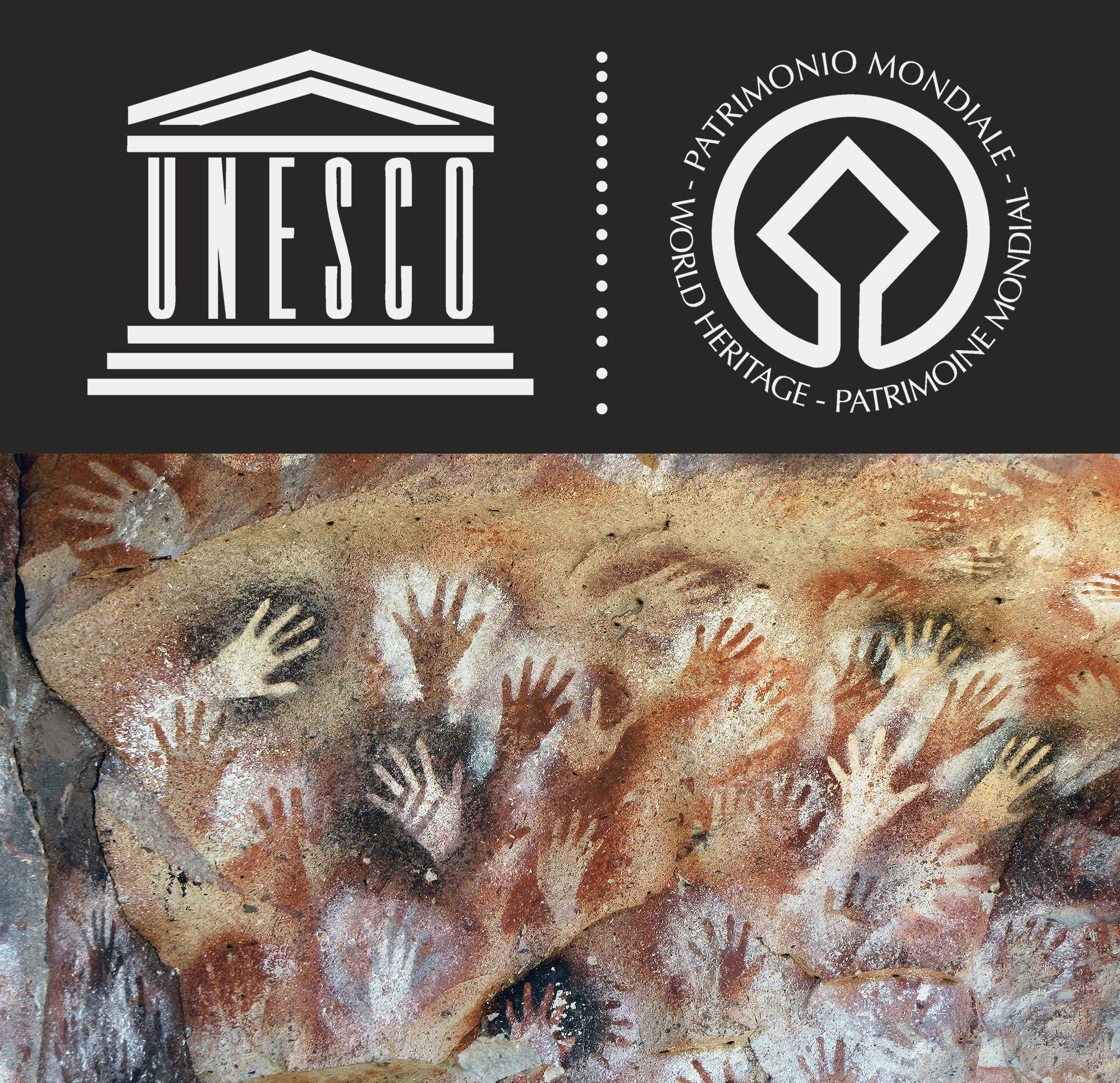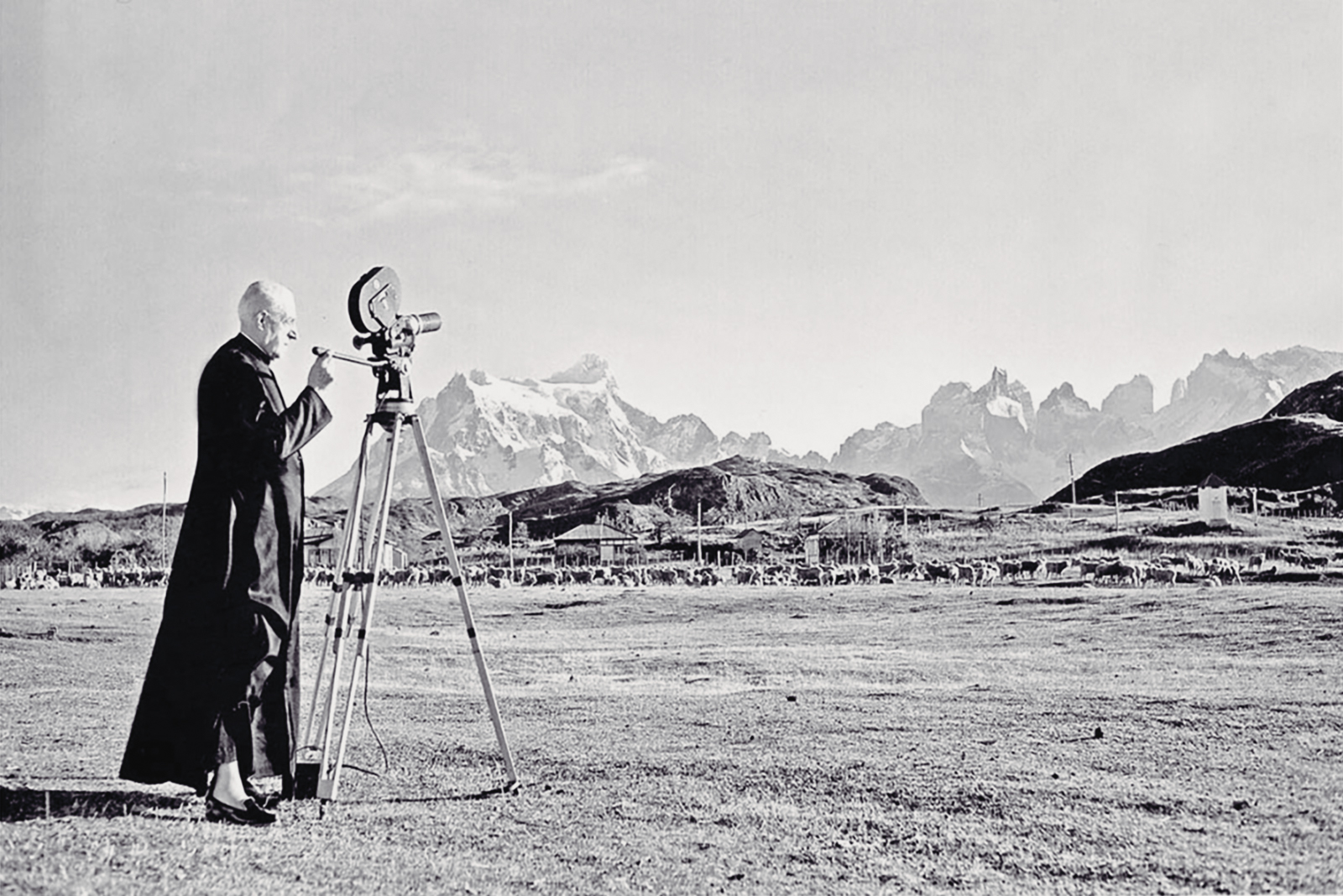


Cueva de las Manos was inscribed to the UNESCO World Heritage List in 1999. A World Heritage Site is a landmark or area with legal protection by an international convention administered by the United Nations Educational, Scientific and Cultural Organization (UNESCO). World Heritage Sites are designated by UNESCO for having cultural, historical, scientific or other form of significance. The sites are judged to contain "cultural and natural heritage around the world considered to be of outstanding value to humanity".
Creative Commons Attribution-Share Alike 2.0 Generic license
The rock art of Cueva de las Manos exists in five concentrations, with later figures and motifs often superimposed upon those from earlier periods. The artistic sequence - based on a detailed study of overlapping, the different use of hues, its various states of conservation, and the location of the depictions along different defined sectors - includes three main stylistic groups, the first beginning as early as the 10th millennium BP. The paintings were executed with natural mineral pigments - iron oxides (red and purple), kaolin (white), and natrojarosite (yellow), manganese oxide (black) - ground and mixed with some form of binder.
Archaeological research has revealed that the site was last inhabited around AD 700. It is considered to be one of the most important sites to represent the earliest hunter-gatherer groups in South America during the Early Holocene. The authenticity of the rock art of the Cueva de los Manos has been confirmed by scientific excavations which have made it possible to relate the cave depictions located in the site to the communities living in the region since the 10th millennium BP. This has also been supported by carbon dating.
Although known locally for many generations, Father Alberto Maria de Agostini, an Italian missionary and explorer, first wrote about the site in 1941. De Agostini lived as a missionary in Tierra del Fuego and Patagonia, between Chile and Argentina, where he was the first person to reach several mountain peaks, glaciers and sea sounds; and discovered others, some named after him. It was then investigated by an expedition of the La Plata Museum in 1949. Argentine surveyor and archaeologist Carlos Gradin and his team began the most substantial research on the site in 1964, initiating a 30-year-long study of the caves and their art. It was Gradin's work that helped to identify the different stylistic sequences of the cave.
The hunting scenes portray a variety of hunting techniques, including the use of 'bolas' - a throwing weapon made of weights on the ends of interconnected cords, designed to capture animals by entangling their legs. In one panel a crack in the rock is used to represent a ravine that the hunters chase the animals into. Guanacos were the main source of food. Most of the painted hands are left hands, and of a size that resembles that of a 13-year-old boy; this may have been an initiation ceremony.
As to the purpose of the art there is remains much debate. Some research has suggested that it may have had a religious or ceremonial purpose and not merely a decorative one. Others, such as Merry Wiesner-Hanks, have suggested that handprints are indicative of the human desire to be remembered, or to record that they were there. Some researchers assert that prehistoric shamanism is the most plausible explanation for the purpose of the artwork. Another hypothesis posits that the art served as boundary markers between peoples, showing territoriality and ensuring the cooperation of others by functioning as aggregation sites. There are also hypotheses that the works were part of hunting magic, with Alan Thorne suggesting that they might have been created as part of efforts to influence the number of animals available to be hunted. Regardless, the fact that many people gathered in one place to contribute to the rock art for such a long period shows a large cultural significance, or at least usefulness, to those who participated.


The photographs included here are courtesy of Michael Turtle, Travel writer. Cueva de las Manos is presented as part of the Bradshaw Foundation South America Rock Art Archive. More information and examples of hand paintings in world rock art can be found in the Hand Paintings and Symbols in Rock Art section of this website.
→ Subscribe free to the Bradshaw Foundation YouTube Channel
→ South America Rock Art Archive
→ Rock Art of Serra da Capivara
→ Rock Art of Pedra Furada
→ World Heritage Site of Cueva de las Manos (The Cave of the Hands)
→ Rock Art of Bolivia
→ The Rock Art of Santa Catarina
→ The Checta Petroplyphs - Peru
→ Bradshaw Foundation
→ Rock Art Network





















